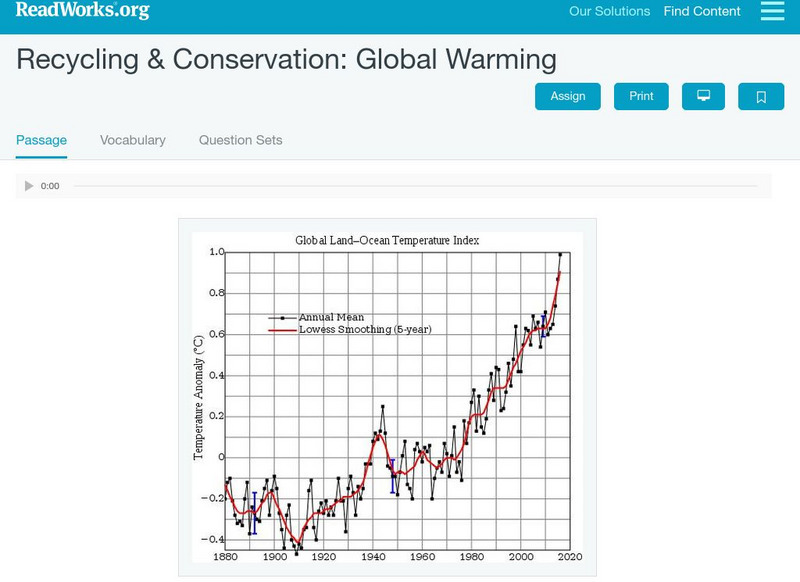University of Waikato
Investigating Sea Level Rise
Find an explanation for the sea level rise. Pupils investigate the difference that melting land ice and sea ice have on the sea level. Groups create two models—one with ice on land and one with ice in the water. As the ice melts, teams...
University of Waikato
Melting Glacial Ice
There are many factors that affect how fast the glaciers are melting. A lab investigation has learners examine how the surrounding water affect the rate glaciers melt. They collect data from two samples of ice to determine how quickly...
Discovery Education
It's Melting!
It's a race to the finish! Which ice cube will melt the fastest? Scholars discover the effect thermal energy has on melting ice. They experiment with melting ice cubes on different materials and learn that even at a consistent...
Curated OER
Will The Ice Melt and Overflow?
Students observe what happens when ice in a glass of water starts to melt. In this ice lesson plan, students see that the ice does not make the water overflow, it simply occupies the space it did in frozen form.
Discovery Education
Cool It!
Adjust the melting time of ice without varying the temperature! Learners experiment with different materials to decide how the materials affect the rate an ice cube melts. They then connect their findings to the conductivity of each...
DiscoverE
Keep-a-Cube
Waxed paper, newspaper, or aluminum foil? Keeping an ice cube from melting may require one or more of these materials. Learners design a box that will provide insulation so an ice cube stays intact for at least 90 minutes.
Carnegie Mellon University
Introduction to Climate
Begin a full lesson on climate change by demonstrating how carbon dioxide gas contributes to increased temperatures. Be aware that pressure inside the antacid-containing bottle in Activity 2 may cause the lid to fly off; keep viewers at...
Curated OER
Ice Earrings Activity
Students put a piece of string between 2 ice cubes and fuse them together with pressure. In this ice lesson plan, students see how the cubes stick together.
Curated OER
Ice Eggs
Students melt colored ice cubes which are created from a funnel, balloons, water, and food coloring. In this ice lesson plan, students put food coloring into water in a balloon, freeze it, and see how the food coloring ended up making...
Resources for Educators
Fractions of Fun
Reinforce concepts and encourage learner engagement with a collection of math games, science experiments, and cross curricular activities. In one fun resource, learners sort objects, keep a diary of everyday fractions, play a game using...
NOAA
Please Pass the Salt
Salinity is the focus of two experimenters that work to answer the question, How does salt change the physical properties of water? Super scientists compare the freezing rate of salt and fresh water, combine the two waters to...
NOAA
Why Should I Care?: Show How Increased Carbon Dioxide Makes the Ocean More Acidic
How does a change in pH affect the ocean ecosystem? Scholars explore the idea by making an acid-base indicator in part seven of the 10-installment Discover Your Changing World series. First, they explore impacts of carbon dioxide in...
Curated OER
Make A Comet
Students make a comet out of corn syrup, ammonia, dirt, ice cream sticks, and more. In this comet lesson plan, students view how these ingredients turn from a solid to a gas.
PBS
The Cat in the Hat Activity Exploring Weather
Observe different types of weather right in your classroom! Here, pupils look at clouds, rain, snow, wind, and hot and cold temperatures, and observe these weather patterns at school. They keep track of their observations in a worksheet...
Science Buddies
Science Buddies: What Makes Ice Melt Fastest?
If you live in a place that gets cold in the winter, you have most likely seen trucks spreading a mixture of sand and salt on the streets after a snowfall to help de-ice roads. This basic chemistry project gives you clues to discover how...
SRI International
Performance Assessment Links in Science: Ice Melting
A lesson plan for guiding students through a simple research experiment focused on transfer of energy is described for teacher administration and student explanation. Also includes a detailed rubric for evaluating student work.
TOPS Learning Systems
Tops Learning Systems: Top Science: Slow Drips [Pdf]
Investigate density by floating an ice cube on the surface of cooking oil and observe what happens as it melts.
Read Works
Read Works: Watching the Weather
[Free Registration/Login Required] This informational text passage talks about weather indications of global warming. This passage is a stand-alone curricular piece that reinforces essential reading skills and strategies and establishes...
PBS
Pbs Kids: Dragonfly Tv Try This!
A collection of simple experiments your students will enjoy! Each activity only requires a few household items, and will certainly spark the creativity in young scientists!
Read Works
Read Works: Recycling and Conservation Global Warming
[Free Registration/Login Required] An informational text about recycling and conservation and their connection to global warming.. A question sheet is available to help students build skills in reading comprehension.
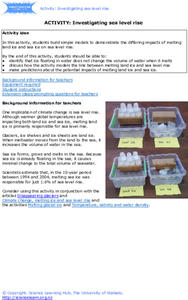








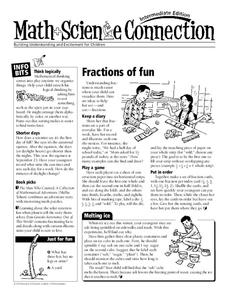




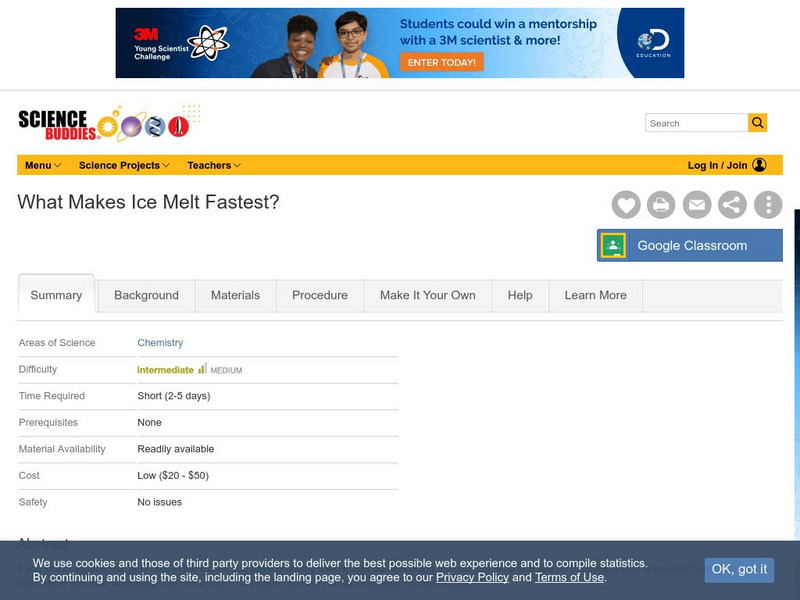
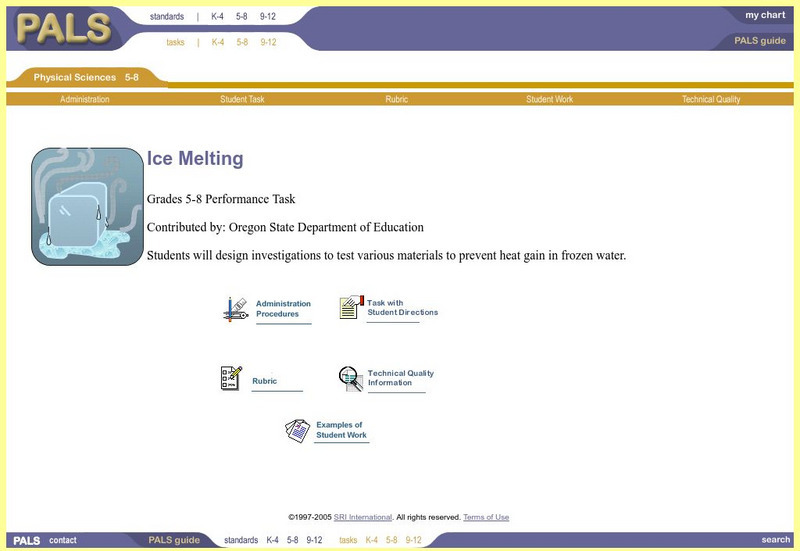
![Tops Learning Systems: Top Science: Slow Drips [Pdf] Activity Tops Learning Systems: Top Science: Slow Drips [Pdf] Activity](https://d15y2dacu3jp90.cloudfront.net/images/attachment_defaults/resource/large/FPO-knovation.png)


